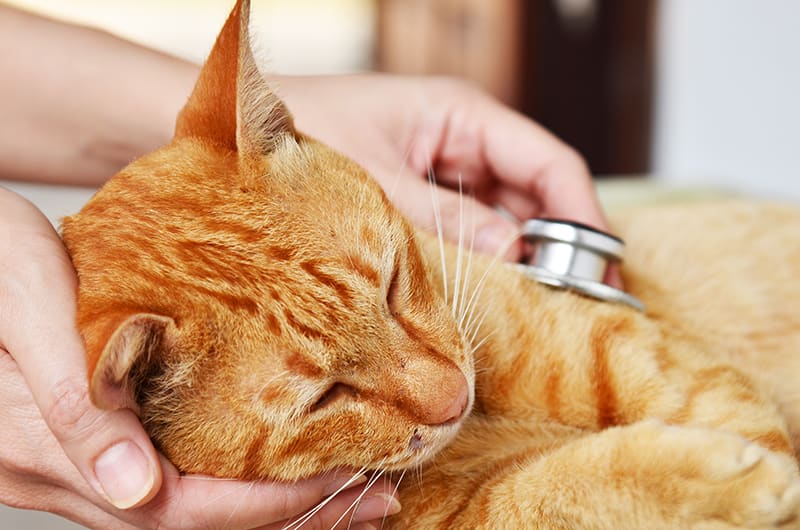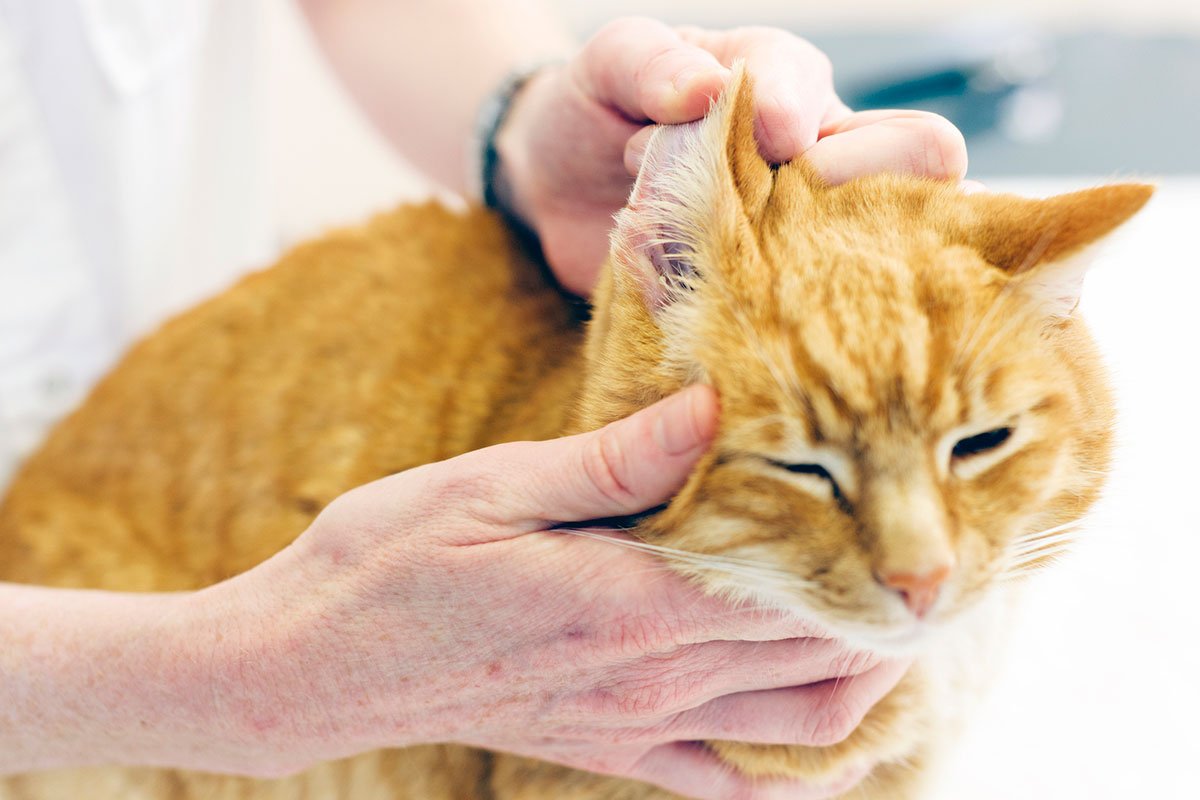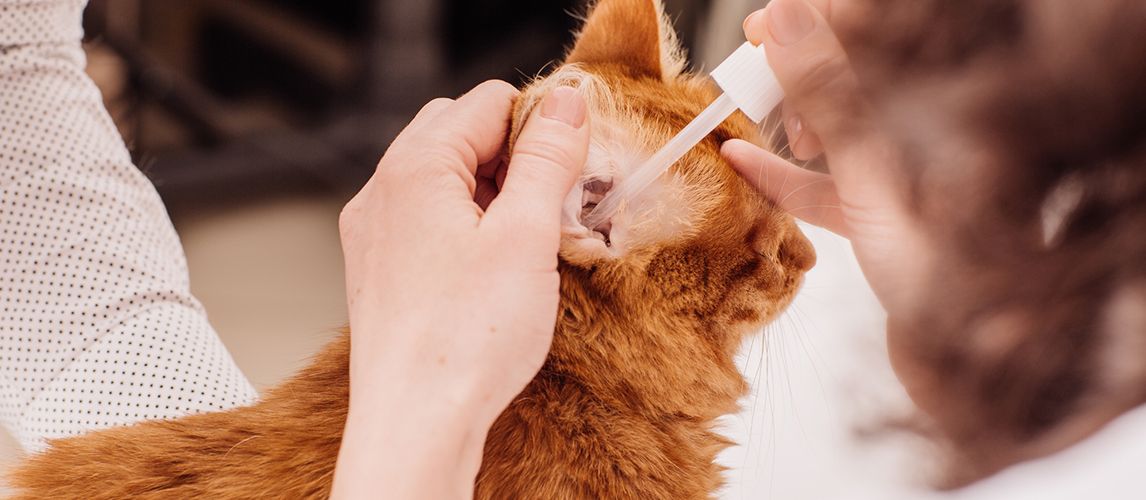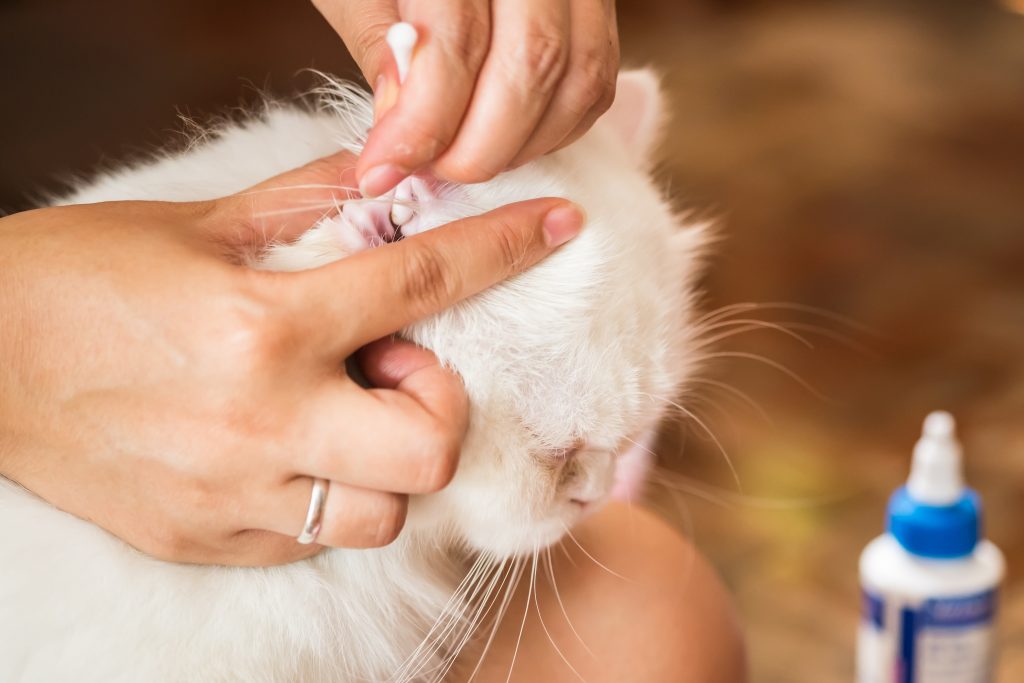Ear mites are an annoying problem for cats. When there is an ear mite infestation, this causes a lot of itching and irritation in the cat. Fortunately, ear mites can be effectively combated by the administration of Otimectin.
This product – containing the active ingredient ivermectin – should be applied twice in the external auditory canal, 7 to 14 days apart. In this way, ear mites in cats can be effectively combated. Otimectin is an over-the-counter product and can be used in cats and kittens from eight weeks of age.
Fighting ear mites in cat
Ear mites in the cat
The ear mite is a parasite that is common in cats† Dogs, ferrets, guinea pigs, rabbits, and foxes can also suffer from it, but the problem can be particularly persistent in cats. Ear mites live in the cat’s external ear canal and in the hairs around the ears.
The critters feed on, among other things, skin flakes, earwax, and other tissue fluids. By crawling in and around the ears, the ear mite cause irritation in the cat. Cats can become restless and start scratching their ears more. This increases the production of earwax, which increases the breeding ground for the mites and allows the problem to spread quickly.
It can also be passed on to other pets. It is therefore important to tackle this problem quickly at the first signs of ear mites.
How do you know your cat has ear mites?
Ear mites mainly cause itching and irritation in cats. This can be aggravated by scratching one’s own ears. That a cat suffers from ear mite can mainly be seen by frequent shaking of the head and scratching the ears.
Reading suggestions; Cat Ear Infection Symptoms, Pitchers and Treatment Detailed Guide
In some cats the irritation can be so high that shaking the head leads to bruising and the scratching leads to infections and even damage to the eardrum. You may also see bald spots in a cat’s fur around the ears. This is often caused by frequent scratching of the ear and head with the front legs.
If ear mites are left untreated, they can quickly get to the point where a black, grainy discharge also becomes visible in the auricle. The lighter a cat’s coat, the better this discharge will be visible. In the long run, the discharge can also start to smell very bad.
The vet diagnoses ear mites by looking at the cat’s ear canal with an ear telescope or otoscope. Usually, it is immediately clear because the ear mites can be seen crawling. A definitive diagnosis is made by taking a small amount of earwax and looking at it under a microscope.
How do you fight ear mite with Otimectin?
If your cat suffers from an ear mite infection, it is important to start treatment as soon as possible to keep the discomfort for your cat to a minimum. Ear mites in cats can be combated by applying an ear gel. The antiparasitic drug Otimectin is the appropriate remedy. Otimectin contains the active ingredient ivermectin. It interferes with the neurotransmitters glutamic acid and gamma-aminobutyric acid (GABA), paralyzing and eventually killing the parasites that are susceptible to them.
The intention is to fill the external auditory canal with the product and then distribute it well and massage it. If you follow the instructions in the leaflet correctly, you can divide approximately 1 gram of the product over each ear. Regardless of whether the complaints are still present, it is recommended to repeat the treatment after 7 to 14 days.
Otimectin should only be administered to cats and kittens from eight weeks of age. It is not recommended to use the gel if the cat is known to have a damaged eardrum.
Availability Otimectin
The product Otimectin for the control of ear mite infestations in cats is available in tubes of 1 mg/g. You can buy it from the vet, but the product is also freely available at most pet stores and online stores
Although Otimectin is sometimes used off-label by veterinarians to combat ear mites in dogs, it is not recommended to use it on pets other than cats. A different type of ear cleaner is often recommended for other pets such as rabbits and guinea pigs









